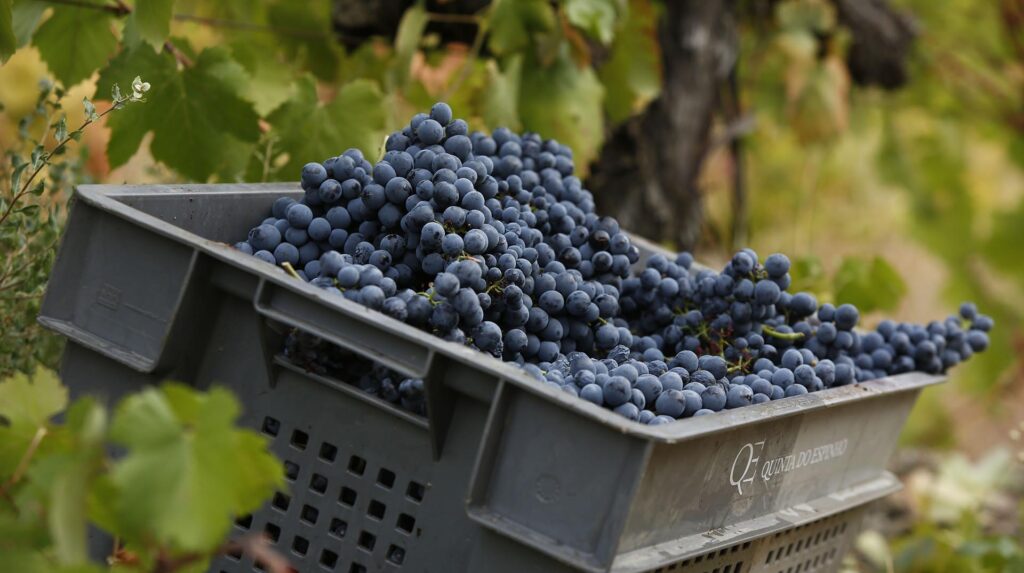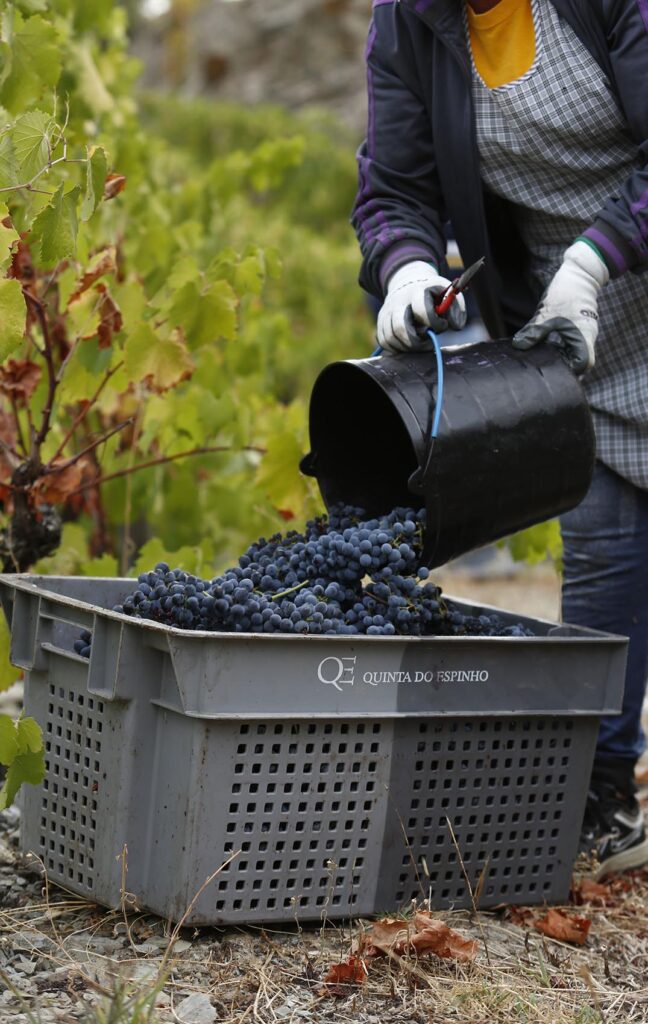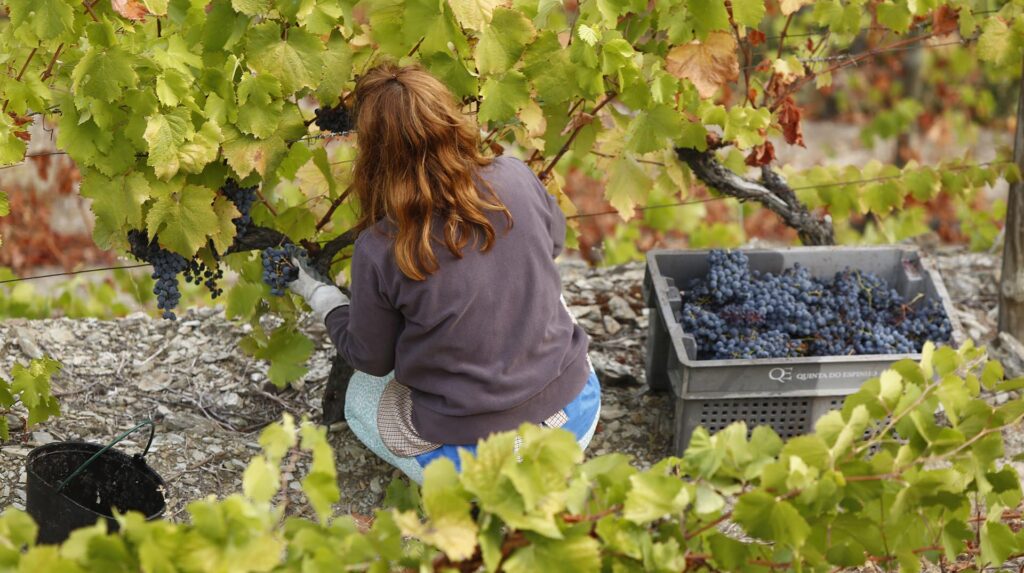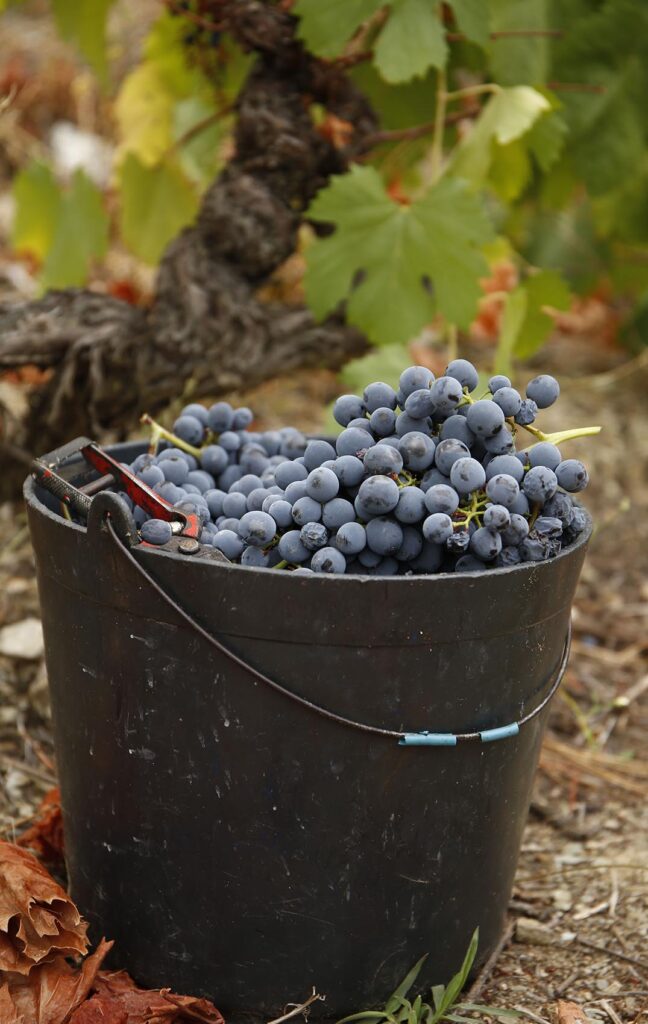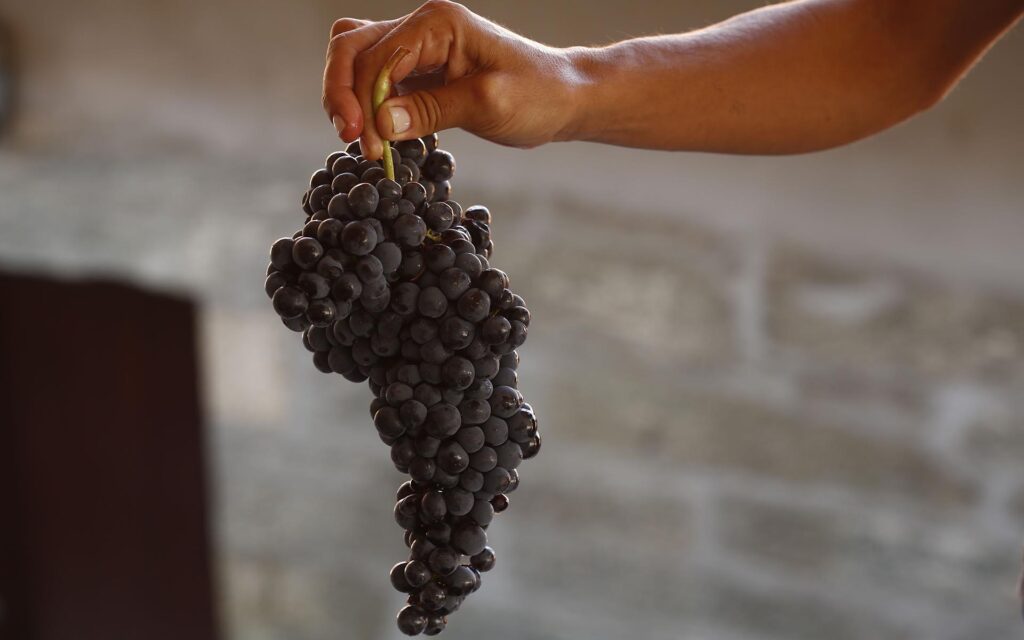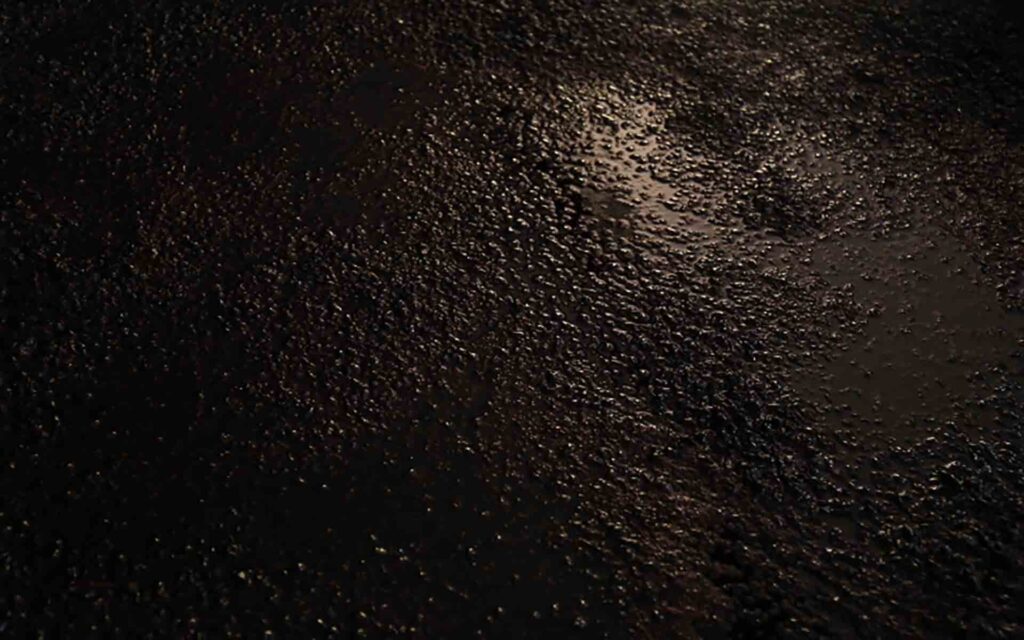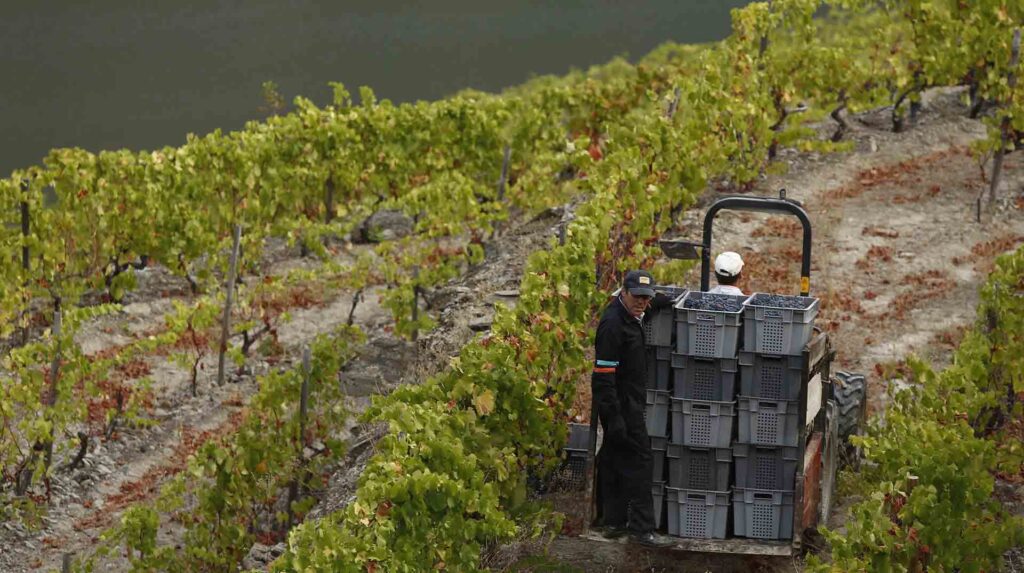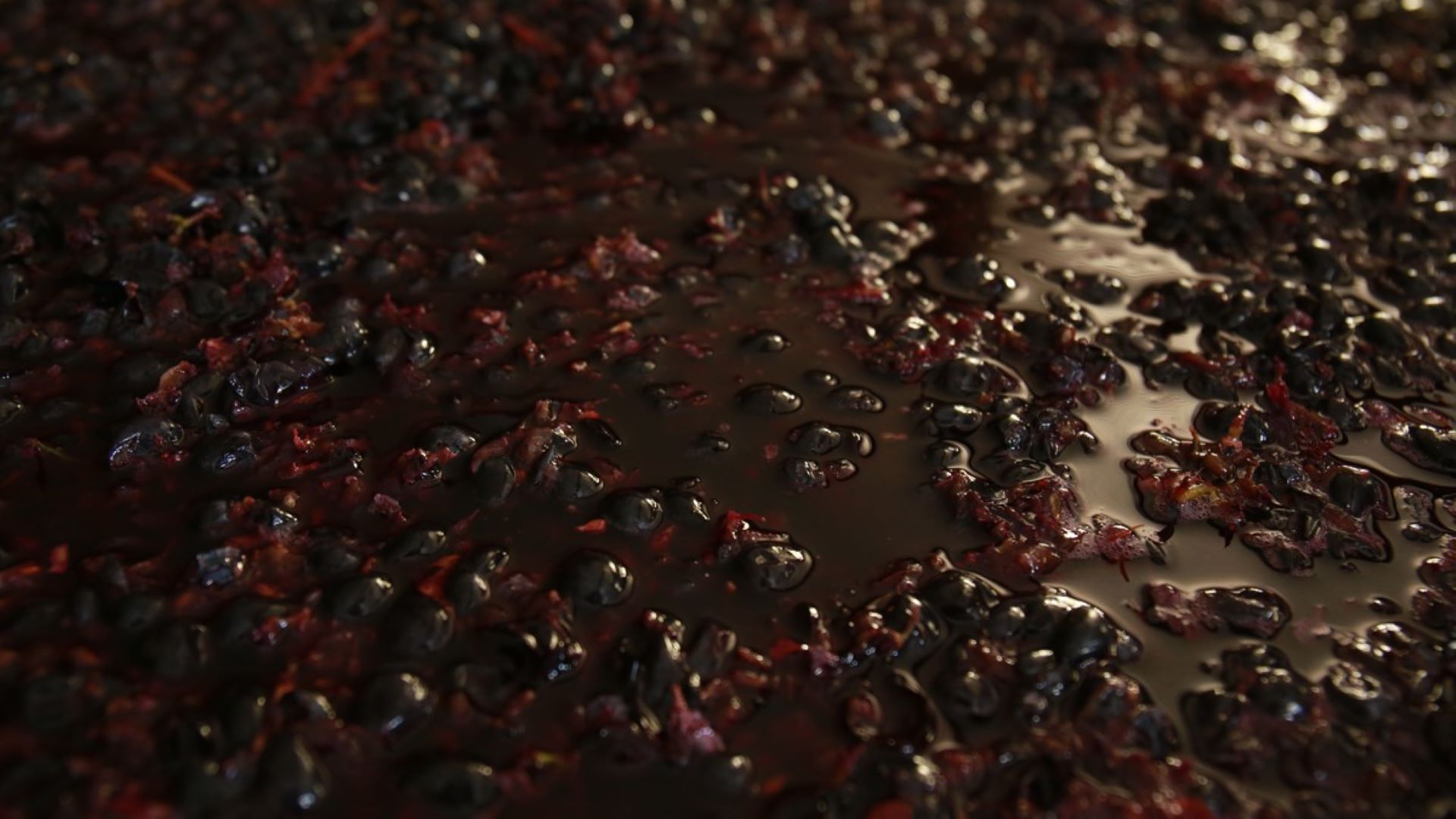The wine production process at Quinta do Espinho starts with selecting and transporting grapes to the winery in containers weighing up to 25 kg (55 lbs.). This ensures that the grapes are kept in perfect condition until they arrive at the winery. Upon arrival, the grapes are evaluated and inspected on sorting tables before being destemmed and placed in either thigh-deep granite treading tanks (known as “Lagares”) or stainless steel tanks for threading and mechanical extraction. Fermentation takes place for up to 7 days under temperature control. For red grapes, after the primary fermentation, the free-run wine is pumped off into stainless tanks, and the skins are gently pressed to extract the remaining juice.
In small quantities, high-quality wine brandy (Aguardente) is produced with the leftover grape pomace.
Natural features of our “terroir”, strengthened by our decision to maintain bush edges, orchard and forestry production areas, are fully expressed in our wine, olive oil and honey.
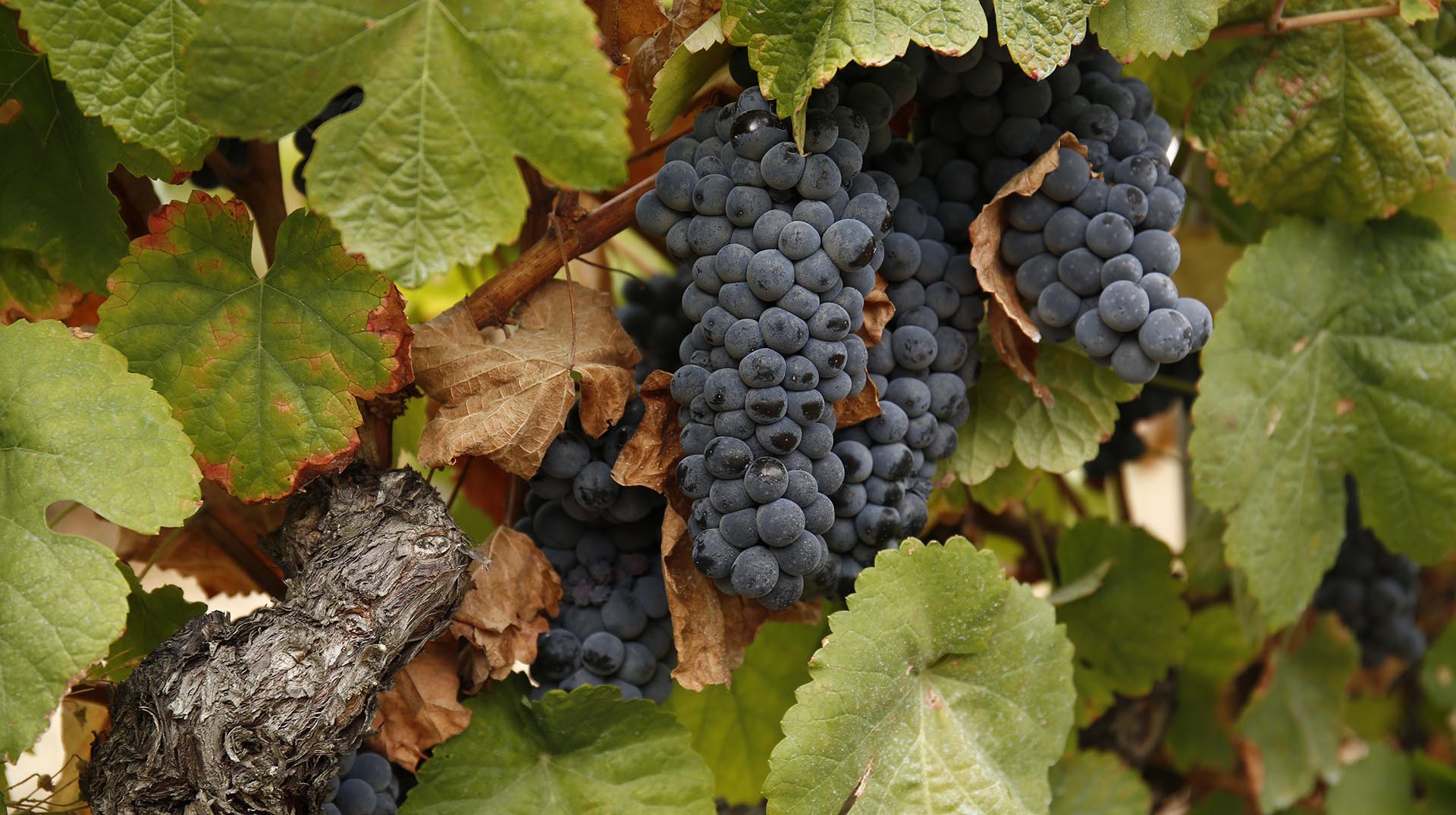
Grapes maturity condition is evaluated against a set of regulated quality parameters (determined primarily by the ripeness of the grape as measured by sugar, acid and tannin levels) that ensure the production of high quality wine. The abovementioned parameters differ according to several terroir factors (berry size, grape yield.
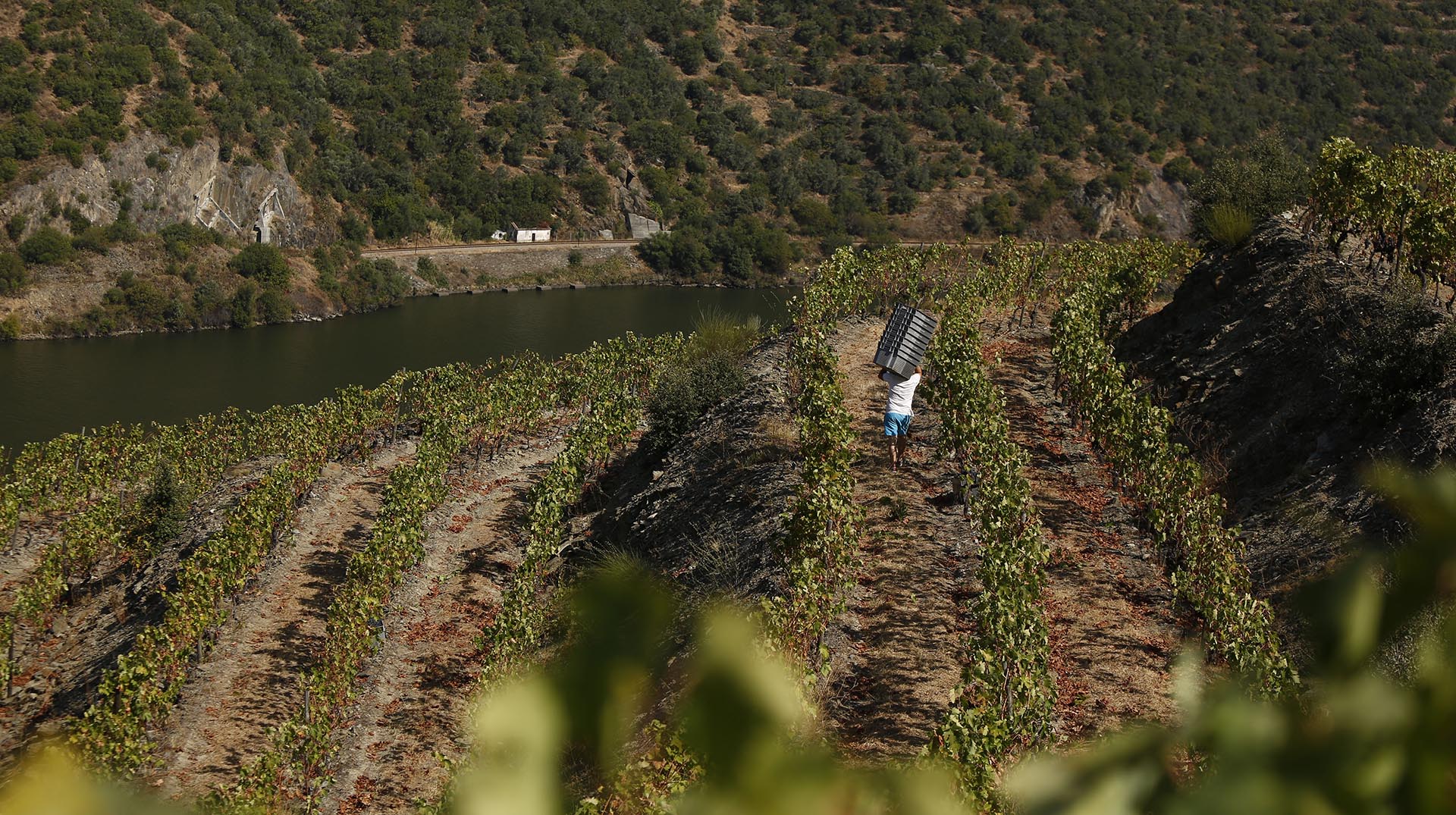
In preparation for harvesting by hand, design-smart agricultural containers of up to 25-kg (55 lbs.) are placed along the vine lines, in a long and meticulously planned job. Later, the containers of grapes are brought back to the cool stone buildings of the “adega” (winery) on a flatbed truck.
In the old days, working hours from sunrise to sunset, men carried the grapes in 70-kg (150 lbs.) wicker baskets on their backs, across “patamares” (terraces).
50-kg (110 lbs.) deep woven wicker baskets were used in the old days, carried on the back by laborers along the !patamares”.
Grape picking is all done by hand, after what they’re carefully put into buckets and plastic containers. Mechanical harvesting along “patamares” is virtually impossible. Besides, hand-picking grapes allow for the knowledge and discernment of the worker to pick only healthy bunches and the gentler handling of the grapes.
Grapes are to be gently de-stemmed in order to keep each individual grape as intact as possible. For this, it is important that they spend as little time as possible out in the vineyard once they have been picked.
We favor the combination of the traditional method of winemaking and temperature control, in “lagares” with the most modern winemaking and maturation technology. Under temperature control, fermentation takes place for up to 7 days, after what the product is transferred to stainless-inox containers with thermoregulation. Our wines reflect the investments made in the recovery of the old “lagares” and a state-of-the-art winery.
